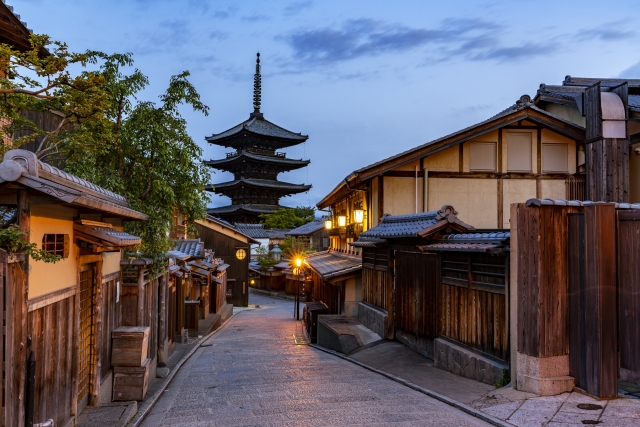News
2023.07.31
Columns
Kyo Ware / Kiyomizu Ware : Development of Pottery in Kyoto
Kyo ware / Kiyomizu ware (Kyo-yaki / Kiyomizu-yaki) are generic names for pottery made in Kyoto. Each artist has a strong individuality, and works of high artistic quality unique to Kyoto continue to be created. In this column, we would like to introduce such Kyo ware and Kiyomizu ware.

Table of Contents
1. Differences Between Kyoto Ware and Kiyomizu Ware
2. Characteristics: Individuality Born as Many as the Number of Potters
3. History
_ 3.1 Influence of Tea Ceremony
_ 3.2 People who Contributed to Development
_ 3.3 Succession and Development of Traditions
4. Conclusion
The Difference Between Kyo Ware and Kiyomizu Ware
Today, pottery made in Kyoto is called “Kyo ware / Kiyomizu ware”, but originally, there was a distinction between Kyo ware and Kiyomizu ware depending on the area where the pottery was produced. The pottery that was fired in the Kiyomizu Temple area around Gojozaka, which is the approach to the temple, is called “Kiyomizu ware (Kiyomizu-yaki)”, and the other pottery that spread mainly in the Higashiyama area since the early Edo period is called “Kyo ware (Kyo-yaki)”.
However, with the passage of time, the number of kilns in Kyoto decreased, and in modern times, Kyoto ware and Kiyomizu ware have come to be used almost interchangeably, and both have come to be collectively referred to as “Kyo ware and Kiyomizu ware”.
Characteristic: Individuality Born as Many as the Number of Potters
Many pottery-producing regions developed because they were able to collect soil suitable for pottery. However, in Kyoto, that kind of soil cannot be collected. Therefore, they order the pottery clay and pottery stone as necessary from all over Japan, mix them according to the preferences of potters and customers, and produce pottery. Because each potter customizes their own, there are a wide variety of types, and it can be said that there are as many types as there are potters. Therefore, Kyo ware and Kiyomizu ware do not have a specific characteristic, but it can be said that each potter has a strong individuality.
History
Influence of Tea Ceremony
Despite the fact that pottery clay and pottery stone cannot be mined, the reason why pottery production flourished in Kyoto is that Kyoto was a pottery consumption area. In the Edo period, Kyoto was the center of the tea ceremony culture, and there were many opportunities for tea ceremonies, and there were many orders for tea utensils and tea utensils from court nobles and feudal lords. Even before Kyo ware and Kiyomizu ware began, pottery was made in Kyoto, but along with the development of tea ceremony culture, the production of Kyo ware and Kiyomizu ware was developed in order to meet the needs of the tea ceremony.
People who Contributed to Development
Kyo ware and Kiyomizu ware, which are commonly called today, began in the early Edo period. We would like to introduce the people who have contributed to the development of Kyo ware and Kiyomizu ware.
Early to Middle Edo Period
Kyo ware and Kiyomizu ware made from the early to the middle of the Edo period are called “Ko-Kiyomizu”. It is said to be the root of today’s Kyo ware and Kiyomizu ware.
◆ Ninsei Nonomura
Ninsei, who was originally a potter in Tanba, which is famous for tea kettles, opened a kiln in front of the gate of Ninna-ji Temple in the early Edo period. His style was the brilliant and elegant colors of iroemono, which had a great influence on the world of pottery in Kyoto after that.
◆Kanzan Ogata
Although he was born into a family of kimono merchants in Kyoto, he pursued the path of a potter and further developed Ninsei’s style. His older brother Korin, who was a Japanese painter, drew pictures, and Kenzan left behind works of high artistic quality, such as a picture plate jointly created by the brothers in which Kenzan praised poetry.
Late Edo Period~
From the latter half of the Edo period, porcelain production began in earnest.
◆ Eisen Okuda
Eisen excelled at Gosu Akae patterns, and produced many porcelain with a sophisticated and elegant impression. He produced many pupils, each of whom worked hard to make pottery in their own style, and Kyo ware and Kiyomizu ware reached their heyday. Some of his pupils include Aoki Mokubei, who contributed to Kutani ware.
Succession and Development of Traditions
One of the characteristics of Kyo ware and Kiyomizu ware is that they keep the traditions that have been handed down from the early Edo period, but also incorporate new things.
During the Meiji period, products were made using plaster molds, and these for overseas markets were developed. Around the same time, European-style round kilns were also used to produce Western-style ceramics.
Conclusion
Even if pottery clay or pottery stone cannot be mined, they have been blended from various parts of Japan to create various types of pottery, which is a characteristic that is rarely seen in other pottery production areas. In addition, Kyo ware and Kiyomizu ware continue to develop further in a style that preserves tradition while incorporating new things in line with the flow of the times, and is being disseminated both domestically and internationally.
Imoto Sangyo handles a wide variety of Japanese ceramics and pottery. For more information, please see the “Goods & Cases” page.
(Reference)
Kyoto Federation of Ceramics Association
Category
Archive

